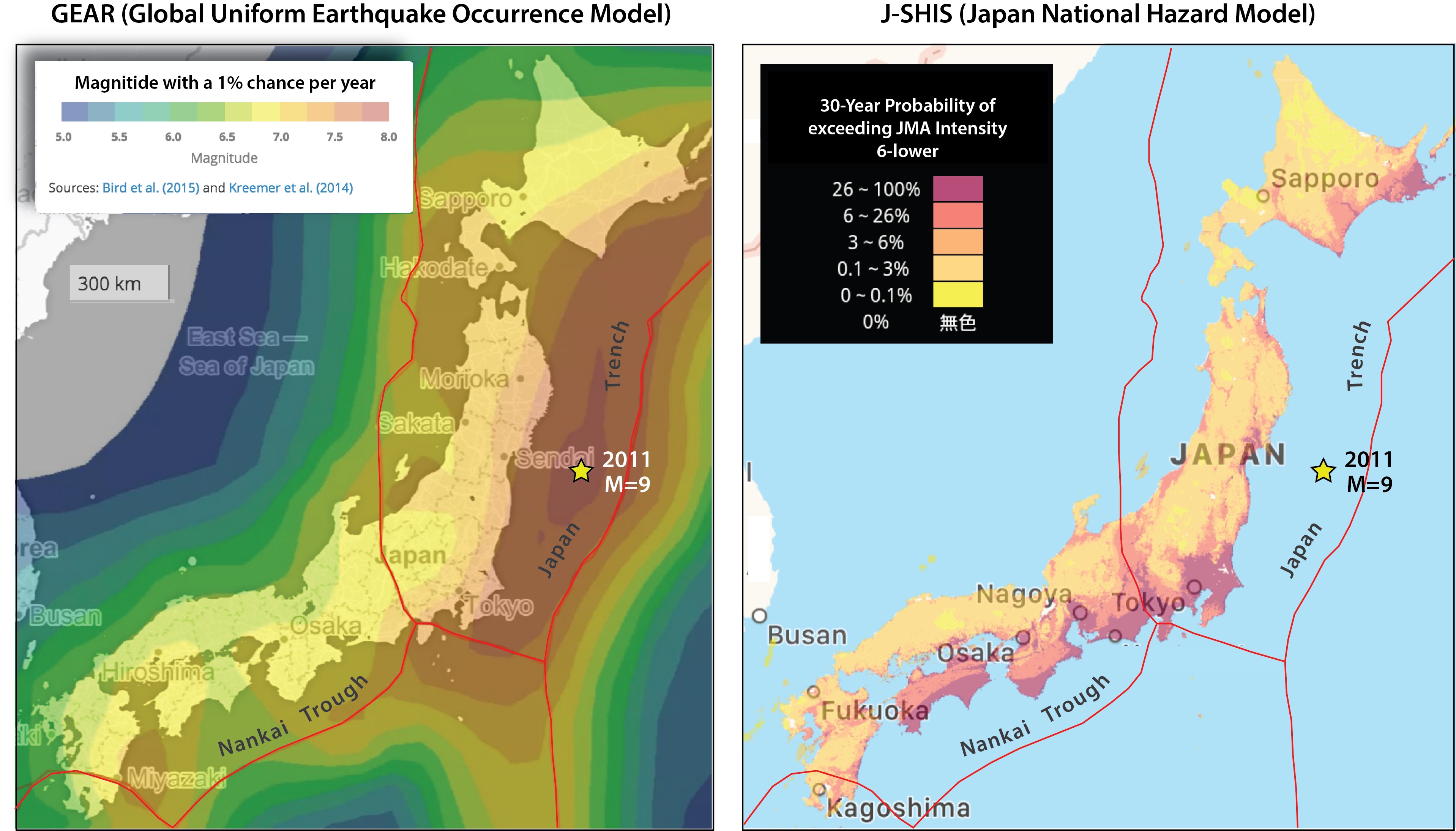By David Jacobson, Temblor
At 9:11 a.m. local time today, a M=5.8 earthquake struck offshore of Japan, near the Fukushima Nuclear Reactor, which was crippled in the M=9 Tohoku earthquake in 2011. Fortunately this quake was not large enough to cause any new damage to the reactor, which is expected to take at least four decades to dismantle. Two of the reasons why no damage occurred is because the quake was offshore and at a depth of 35 km, meaning only light shaking was felt in populated centers of Iwaki (Pop: 357,000) and Fukushima (Pop: 294,000). The USGS PAGER system estimates that should there be any economic losses, they will remain extremely minimal.

Japan is one of the most seismically active countries on earth. Just off the eastern coast of the country are two subduction zones. In the southern part of the country is the Nansei-Shoto (Ryukyu) Trench, where there Philippine Sea plate subducts beneath the Eurasian Plate at rates varying from 47-61 mm/yr. To the north, is the Japan Trench, where the Pacific Plate subducts beneath the North American Plate at rates as high as 90 mm/yr (See USGS map below). What is also evident in this map is that northern Japan is much more seismically active than the southern portion of the country. While much of this can be attributed to aftershocks from the M=9.0 Tohoku earthquake there is still a greater rate of seismicity in the north. Based on the location of today’s M=5.8 earthquake, and its shallowly-dipping thrust focal mechanism, it likely occurred on the subducting slab, making this a late aftershock of the 2011 Tohoku quake.

In terms of the seismic hazard of Japan, there are two schools of thought, which are heavily related to the recent seismicity and convergence rates. Below is a comparison of the Global Earthquake Activity Rate (GEAR) model, which is available in Temblor, and the Japan National Hazard Model. The GEAR model uses seismicity from the last 40 years and global strain rates to forecast the likely earthquake magnitude in your lifetime anywhere on earth, while the Japanese model estimates the likelihood of strong ground shaking. What is immediately evident is that the models are almost opposite one another. The GEAR model sees the lack of earthquakes and slower convergence rates near the Nankai Trough as an indication of lower seismic potential, whereas the Japanese model interprets it as an increased likelihood of a large magnitude earthquake. While it is entirely possible that a large quake could strike along the Nankai Trough, it should be pointed out that the Japanese model misses the hazard near the M=9.0 Tohoku earthquake, while the GEAR model shows an extremely high hazard.

Regardless of which model better depicts the seismic hazard of Japan, what is clear is that nearly the entire eastern seaboard is susceptible to seeing M=6.75 earthquakes. This translates into an extremely high awareness among residents. It is because of this that Japan is at the forefront of seismic safety, and often considered the country after which other countries should model their earthquake preparedness.
References
USGS
Japan Seismic Hazard Information Station (J-SHIS)
9News
- Earthquake science illuminates landslide behavior - June 13, 2025
- Destruction and Transformation: Lessons learned from the 2015 Gorkha, Nepal, earthquake - April 25, 2025
- Knock, knock, knocking on your door – the Julian earthquake in southern California issues reminder to be prepared - April 24, 2025
